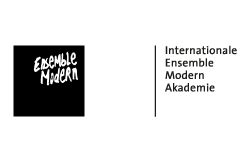21
MAY 2016 SUN
22
MAY 2016
The concert project initiated and commissioned by the Alte Oper Frankfurt, and designed by US architect Daniel Libeskind, reaches far beyond the conventional framework of the concert hall and leaves behind all the traditional concert rituals. “One Day in Life” is the name given by this big-thinking architect to his musical day, with which he challenges the audience to become active and make their way through the city, through the music, and through life itself. The concert project “One Day in Life” is made up of individual concert events at various locations in Frankfurt.
„It is a journey; it is an unexpected journey to places that are so close and at the same time so far. I think that the close and the far can be brought together by an experience that only perhaps music can allow. It is the wonder of encountering something that brings the space of architecture and the time of music into a whole.“
Daniel LibeskindFIRE & RESCUE
TRAINING CENTER
Simulation
Works by Stockhausen, Biber and Beethoven
OPERATING THEATRE
BODY
Works by Marais and indische Ragas
SENCKENBERG MUSEUM OF NATURAL HISTORY
NATURE
Works by Vivaldi and Saariaho
REBSTOCK PUBLIC BATH
GRAVITY
Works by Handel and Gubaidulina
HIGH-RISE BUNKER
MEMORY
Ben-Haim, Nono and Schönberg
TRAVELLING TRAMS
MOVEMENT
Works by Berio, Scelsi and Mahnkopf
KITCHEN OF THE RÖMER BUILDING
NECESSITY
Works by Telemann and Ligeti
GERMAN NATIONAL LIBRARY, READING ROOMS
TRANSLATION
Works by Schubert
GERMAN NATIONAL LIBRARY, REPOSITORY
TEXT
Works by Ablinger and Monteverdi
OPERNTURM - 38TH STOREY
KNOWLEDGE
Works by Pérotin and Sciarrino
SIGMUnd FREUD INSTITUTE
TESTAMENT
Works by Klein, Schönberg and Bloch
IN THE NETWORK
UN/SUB/CONSCIOUS
Works by Satie
BOXING CAMP GALLUS
FAITH
Works by Beethoven
VGF RAILCAR DEPOT HALL GUTLEUT
WORK
Works by Mozart
ALTE OPER FRANKFURT
ENCOUNTER
Works by J. S. Bach and Lachenmann
COMMERZBANK ARENA
WILL
Works for solo violin
VGF SUBWAY TRACK
IDLENESS
Solo works from the baroque, neo-classical and modern era
OSKAR SCHINDLER APARTMENT BUILDING
SECRET
Works by Webern and Celan
There are countless ways to experience Daniel Libeskind’s “One Day in Life”. You can decide for yourself which concert events to visit, which route through Frankfurt to take and how long your own personal “One Day in Life” should be. Because most of the individual concerts are offered several times back to back, it is possible to visit numerous events in “One Day in Life” once. All information regarding ticket purchases is available by calling +49 (0)69 13 40 447
Tickets













Photos Daniel Libeskind
© Lana Barkin
Jewish Museum Berlin Tower
© Bitter Bredt
Denver Art Museum Hamilton Building
© Bitter Bredt
Masterplan Sketch „Groand Zero“
©Daniel Libeskind
Photos locations
© Norbert Miguletz, Moritz Reich; Abbildungen Sigmund-Freud-Institut Hörsaal © Michael Riedel „Ohne Titel (A-Z / Die Traumdeutung)“, Foto: Norbert Miguletz; Synapsen © iStock/Alte Oper Frankfurt
Key-Visual
© iStock/George Clerk
Layout
Susanne Wagner
Web development
binaries included, media development